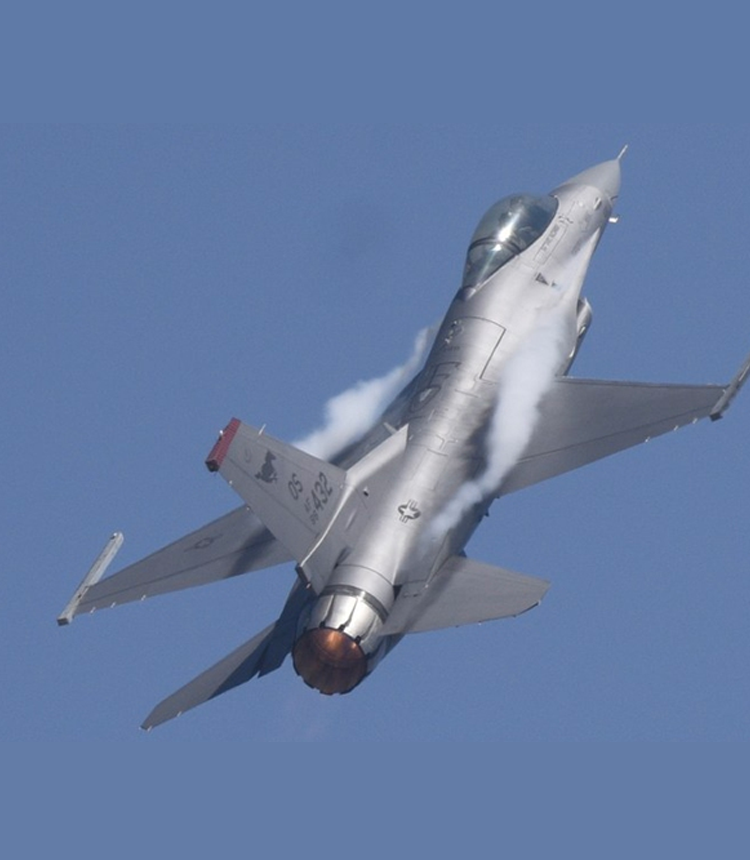
US Air Force fighter aircraft F-16 performs aerobatic maneuvers at the Aero India 2023 at Yelahanka air base, in Bangalore, India, Feb. 14, 2023. Photo: Xinhua
The US recently approved a possible sale of infrared search and track (IRST) systems for F-16 fighter jets to the island of Taiwan in an apparent move to counter J-20 stealth fighter jets of the Chinese People's Liberation Army (PLA), which experts said on Thursday will prove to be futile.
The US State Department has approved a possible $500 million sale to the island of Taiwan of IRST systems for F-16 fighter jets, as well as other equipment, Reuters quoted the Pentagon as saying on Wednesday.
The defense authority on the island of Taiwan said that the new equipment would be used for its latest F-16V aircraft, improving their ability to detect and track long-range targets and "greatly improve the effectiveness of air operations," Reuters reported.
In response, Chinese Foreign Ministry spokesperson Wang Wenbin said at a regular press conference on Thursday that China asks the US to immediately cancel the arms sales plan and stop the dangerous trend of arming the island of Taiwan.
China will take resolute, powerful measures to safeguard its national sovereignty and territorial integrity, Wang said.
Reuters claimed in the report that the F-16V fighter jets have advanced avionics, weapons and radar systems to "better face down" the PLA Air Force, including its J-20 stealth fighter jets.
Chinese mainland experts said that the IRST system does have a theoretical potential to detect stealth aircraft, because unlike radar that uses the reflection of radio waves to find targets, IRST uses heat signals radiating from its target to detect them. Stealth aircraft are designed to be low-observable to radar, but its infrared radiation can only be reduced, not eliminated.
However, this does not make a 4.5-generation fighter like the F-16V capable of rivalling a fifth generation fighter like the J-20 in actual combat, they said.
IRST can only lock on to targets from a closer range than radar, while the J-20 can detect the F-16 from a much longer range using radar, Wei Dongxu, a Beijing-based military expert, told the Global Times on Thursday.
It is a daydream for an F-16 to fight a J-20 using IRST, which is only supposed to be a support system in air combat or used for maritime and ground attacks, Wei said.
In modern warfare, single pieces of equipment cannot win battles. The island of Taiwan's F-16Vs might not even get the chance to take off from airfields before they are destroyed on the ground by precision strikes if a conflict breaks out in the Taiwan Straits, another Chinese mainland military expert, who requested anonymity, told the Global Times on Thursday.
Even if they manage to sortie, the PLA's combination of KJ-500 early warning aircraft, J-20 stealth fighter jet and PL-15 beyond-visual-range missile will give the F-16Vs no chance of using the IRST, the expert said.
Most PLA fighter jets are internally installed with IRST systems, while the F-16V would likely have to carry the system externally as pods, negatively impacting flight performance, observers said.
The latest arms sale plan shows that the US insists on arming the island of Taiwan to exploit the island's military value, turning the island into a cash cow for US arms dealers and making "Taiwan independence" secessionists resist reunification by force while the US gains all the benefits, Wei said. "US arms sales only add instability and contradictions across the Straits," he said.
The PLA Eastern Theater Command on Saturday held a sudden and swift joint exercise around the island of Taiwan in a countermeasure against the island's separatist deputy regional leader Lai Ching-te's provocative "stopovers" in the US.
Surrounding the island of Taiwan from all directions with warplanes, warships and conventional missiles, the close-in deterrence mission not only sent a stern warning against collusion between "Taiwan independence" secessionist forces and external interference forces, but also enhanced the PLA's combat readiness and its capability to completely control the region, experts said.




